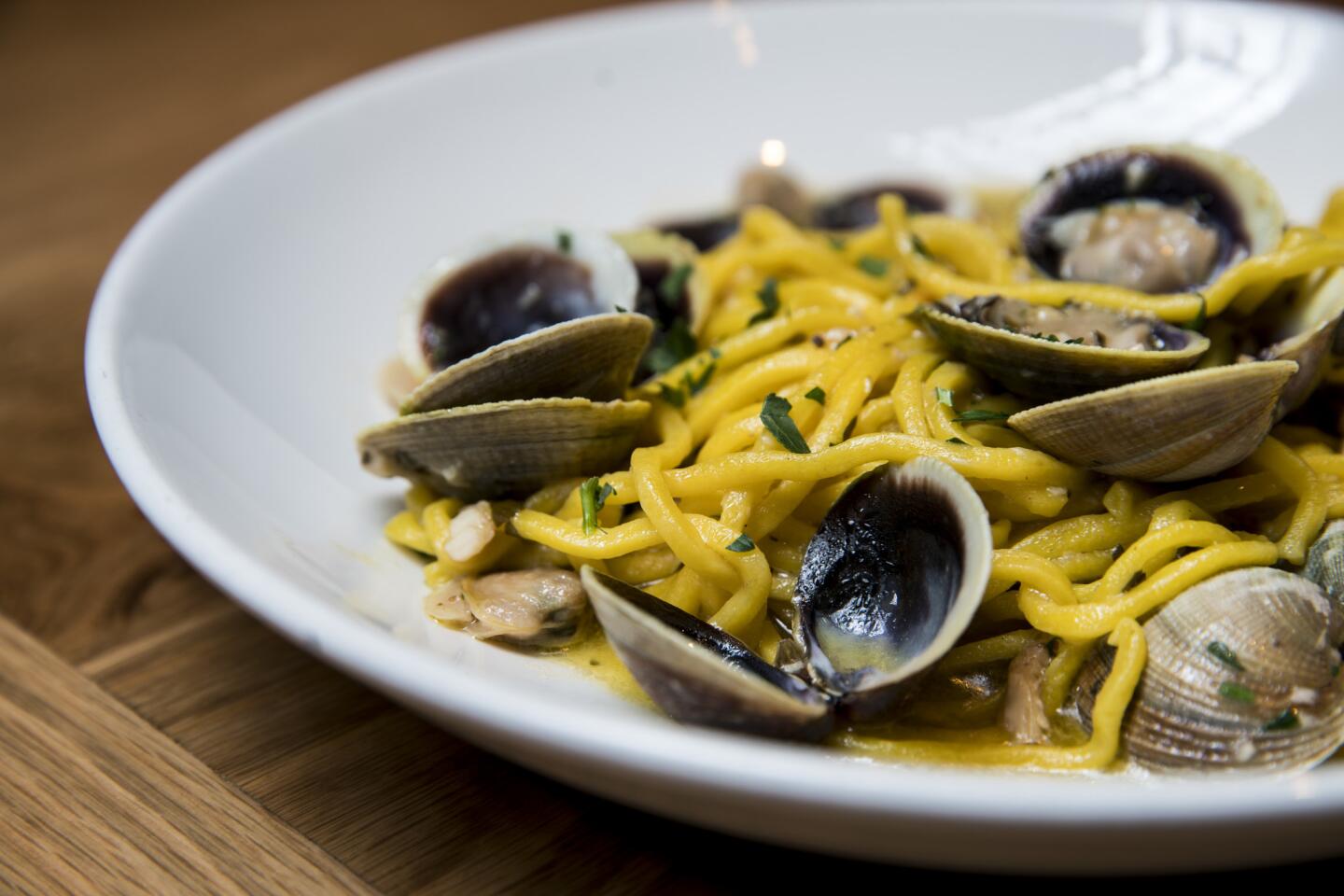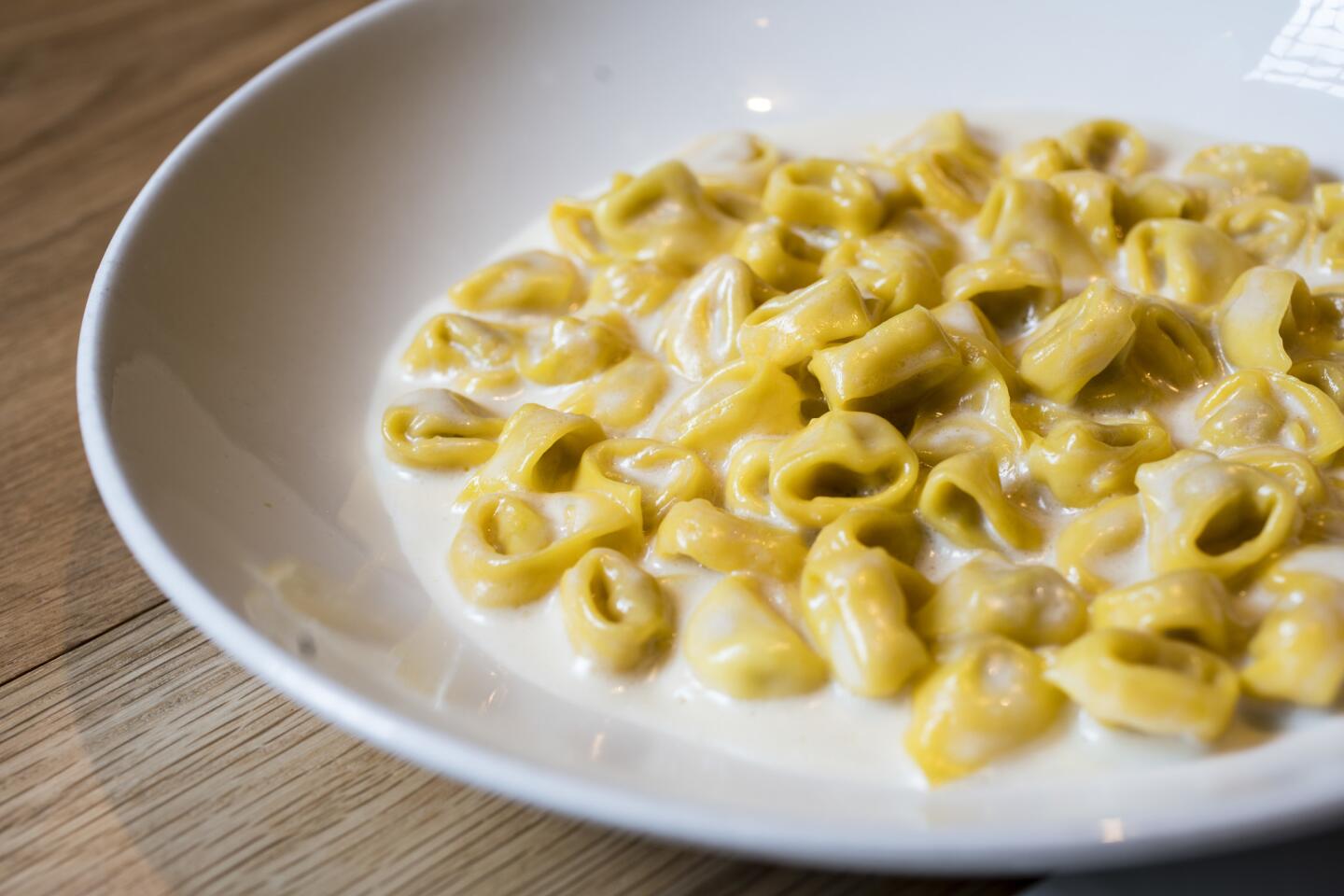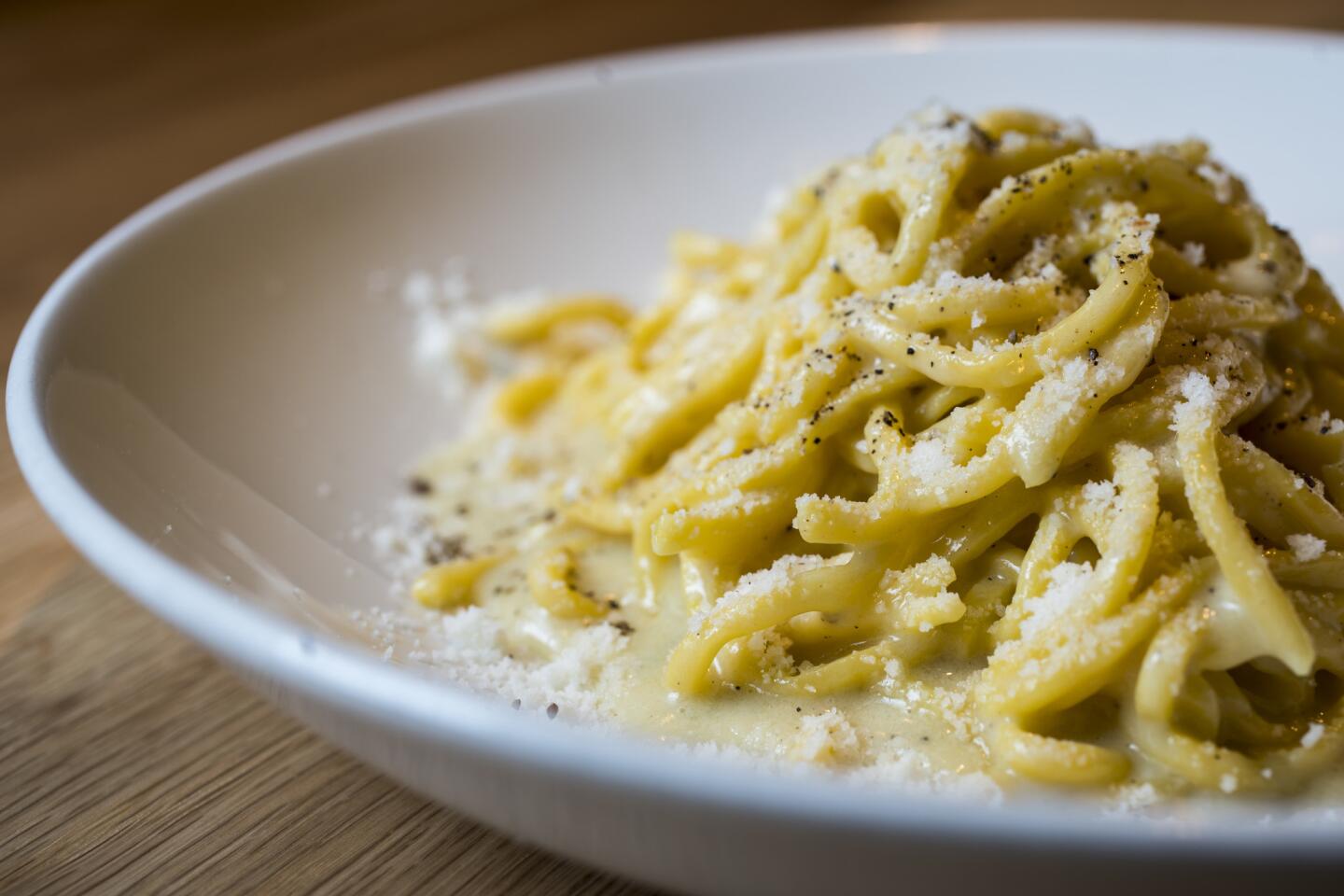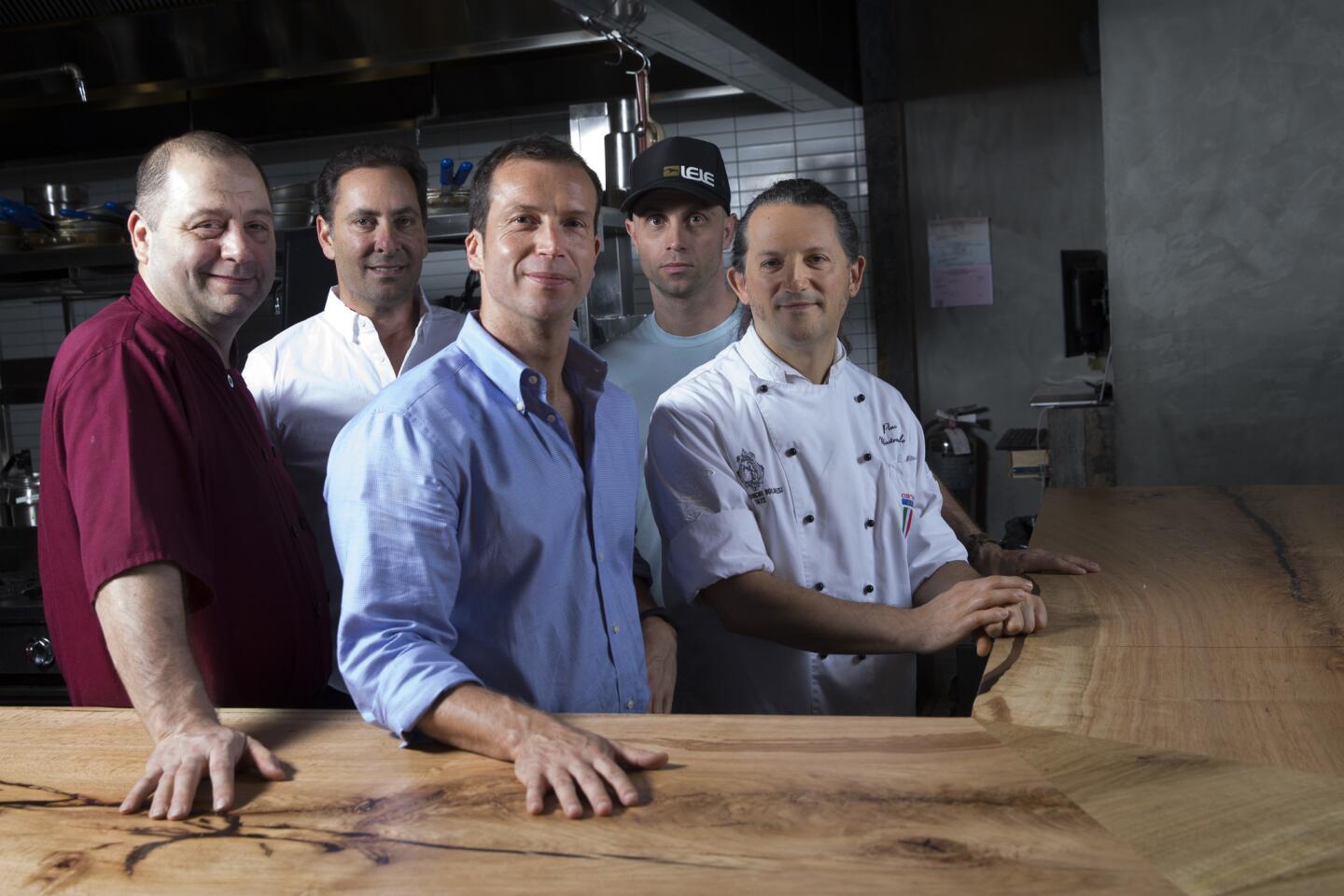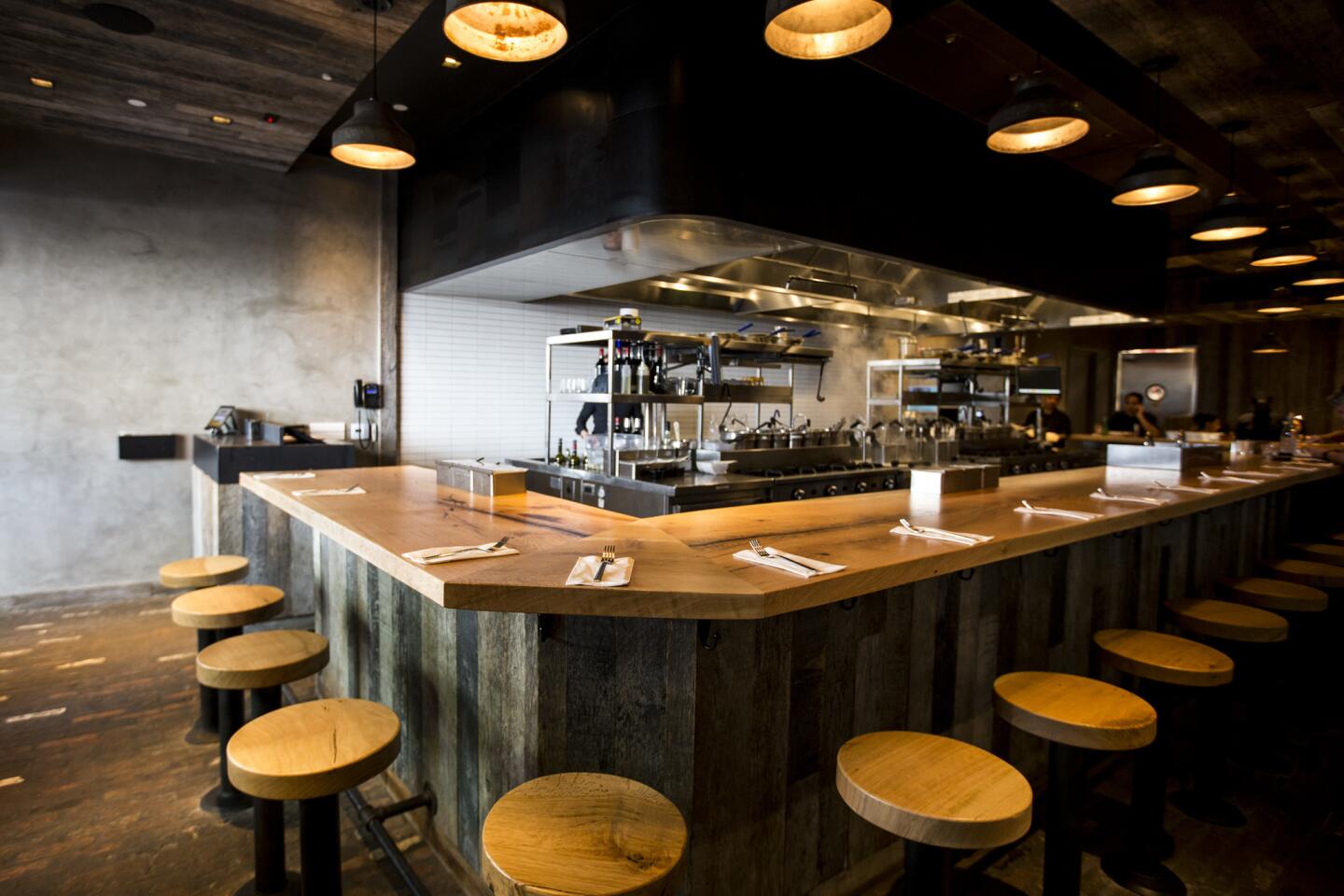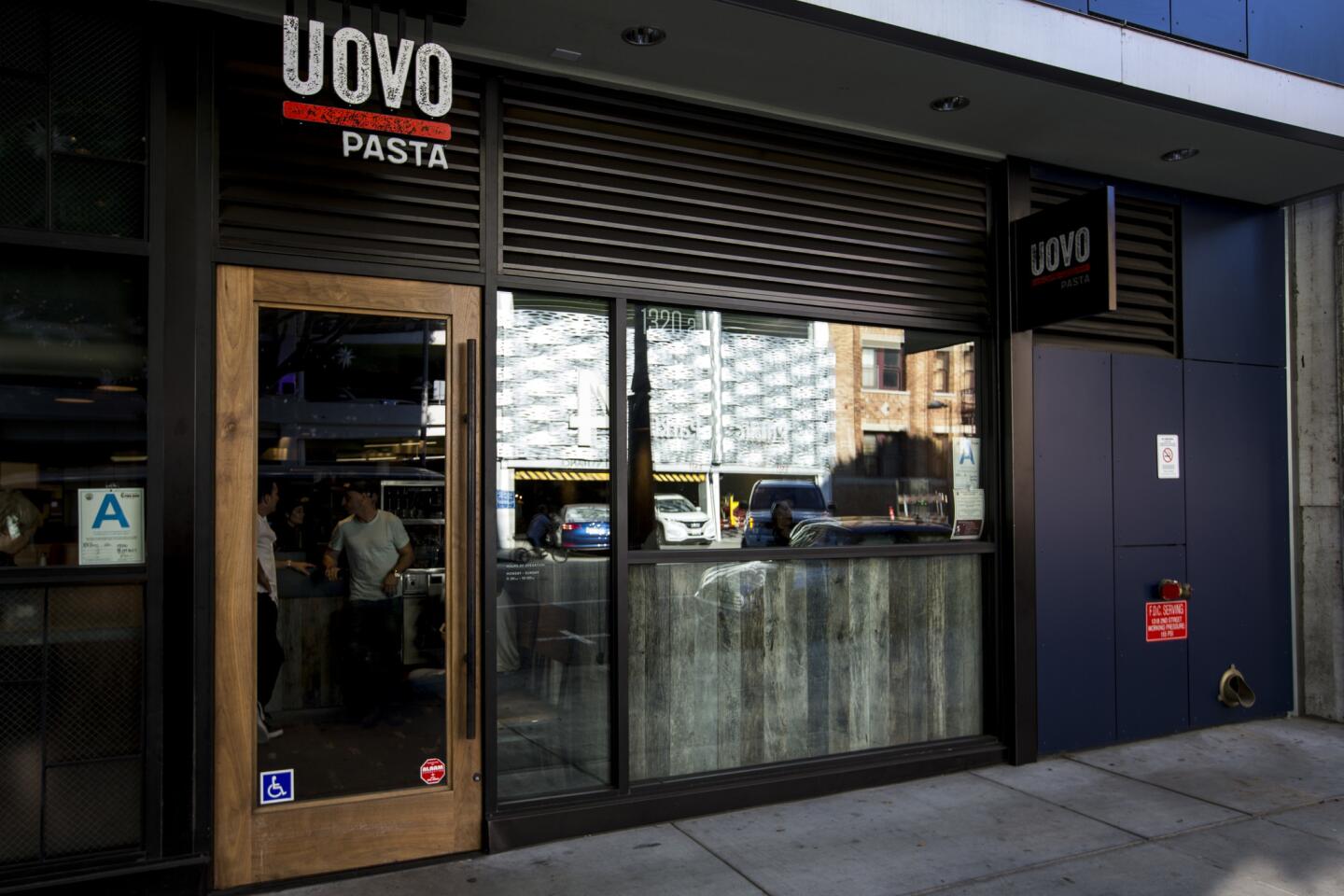Review: Uovo is a fast-pasta concept that actually works, Jonathan Gold admits
Sometimes I think that the closest thing I have to a hobby is making spaghetti allâAmatriciana, the queen of the Roman repertoire, a dish that has inspired me to sneak in cured pig cheek from Norcia, bottled tomatoes from the slopes of Vesuvius, pecorino from Pienza and onions from Alife. The list of ingredients is short, the technique easy and the cost of entry low. The results are never the same twice. And by the time you absorb advice from people admonishing you to caramelize the tomatoes or not, dicing the guanciale or cutting it into thick strips, use red onions, yellow onions or no onions at all, you might as well be one of those guys who sleeps all night outside next to his $2,500 competition smoker. The dish shows no mercy.
So it is almost distressing to admit that the best Amatriciana in town at the moment may be the tonnarelli allâAmatriciana at Uovo, a pasta counter near the Santa Monica Promenade. The tomatoes in the sauce are purĂŠed, which I hate, but they are nicely reduced, and the guanciale is aromatic and crisp in a way I canât quite figure out. The sheepy hint of pecorino cheese is sharp but not overpowering. The funk of the melted fat perfumes the dish without overwhelming it. And the pasta â the handmade, square-cut spaghetti called tonnarelli, flown in daily from a kitchen in Bologna â is just two steps short of magnificent, a bit softer than you might expect but still wriggly and alive, absorbing the sauce without becoming soggy, with a vibrant, wheaty flavor of its own.
I tend to abhor the practice of substituting fresh pasta for dried, which almost always comes at the expense of texture and taste, but Iâd be happy enough to see this tonnarelli at one of the cityâs great Italian tables. I am stunned that it can exist at what is basically the prototype for a fast-food outlet owned by some of the partners in the sushi chain Sugarfish.
The influence of Kazunori Nozawa is underrated, I think, even by those of us who haunted the old Sushi Nozawa during the couple of decades it was open. The Sushi Nazi thing I think most people may know about â some of his customers came to the restaurant for the sheer pleasure of watching him eject newcomers for the audacity of ordering a California roll. He wasnât the first local sushi chef to insist on the omakase menu â âTrust Meâ was the permanent daily special â but he was the first to make it stick. His aesthetic of warm rice, crisp nori and the pleasure of crab hand rolls has become in many ways the dominant Los Angeles style.
But to me at least, he was the first to strip sushi of its mystery; to admit that most of the best fish came in frozen, and that mastery tended to be the result of sheer repetition rather than divine gift. And because essentially everyone at his restaurant ate the same thing at the same time, he developed techniques for serving high-quality sushi at volume.
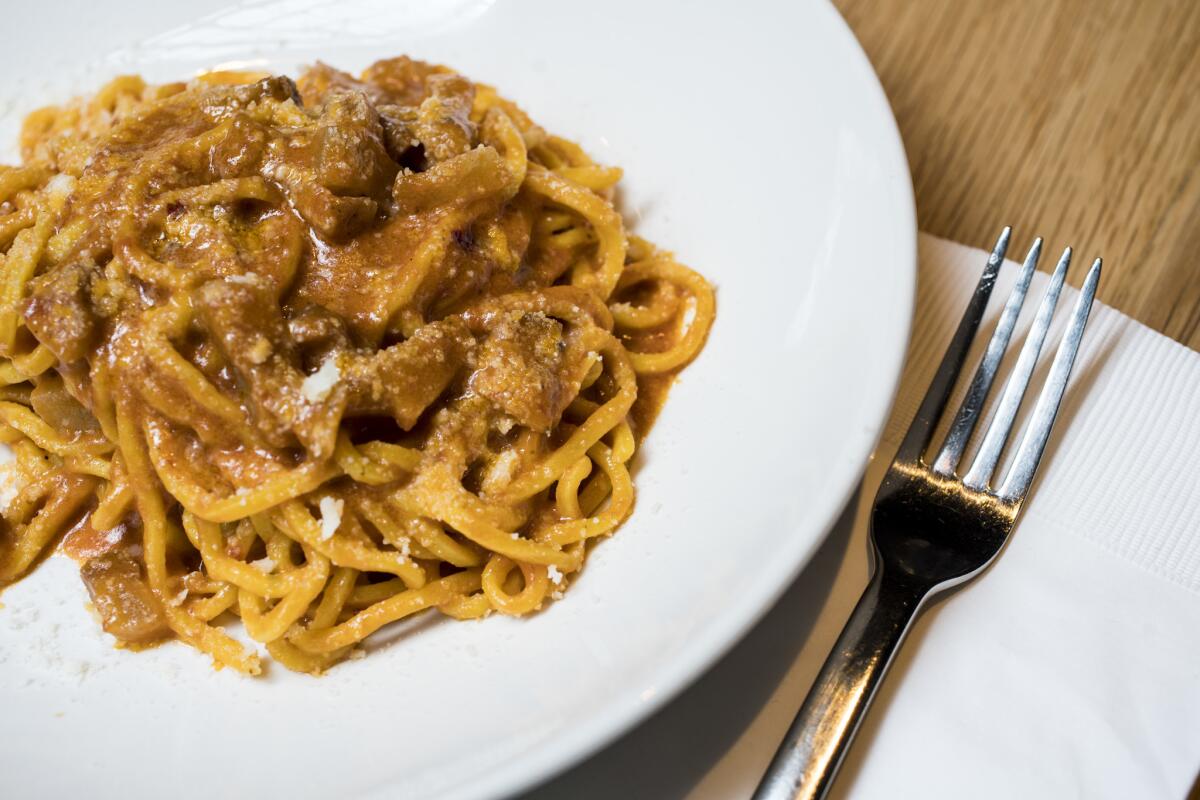
I and others dismissed his innovation as assembly line sushi, nothing near the quality of what we were being served at such personal, craftsmanlike places as Kiriko, Mori or Asanebo. And although we werenât wrong, what we thought was beside the point. Nozawa and his partners adapted the idea of high quality at speed to the quick-serve restaurant chain Sugarfish, where it really was possible to have an acceptable sushi meal in the 25 minutes between your hair appointment and the next show at the multiplex, or their Kazu Nori, where you could probably do it in 15.
So it was probably inevitable that Nozawaâs system made its way to non-Japanese food â and to his partner Jerry Greenbergâs (and Lele Massiminiâs) new restaurant Uovo, which pares Italian fine dining to its barest essentials: pasta, wine and vegetables. Piero Selvaggio tried the same thing with his Primi a couple of decades ago, a pasta-intensive restaurant that dismissed with the idea of the main course, usually the dullest and most expensive part of an Italian meal, but apparently he didnât attack the classic formula with enough cruelty.
Uovo occupies a storefront across the street from a looming city parking structure and a few steps from the indie films at Laemmleâs Monica Film Center. There will be a line outside unless you show up at 4 in the afternoon, but it moves quickly. You grab your own menus. You are shown to a seat at the dining counter or one of the tables in back. There is a pitcher of ice water. It is a good idea to figure out what kind of wine you have in mind before you sit down â the well-regarded super-Tuscan red Grattamacco is well priced at $16 a glass, although the rest of the list hovers around $10.
Are there appetizers? There are not. You order a plate of pasta, maybe a plate of nicely roasted string beans or broccoli, and you get on with your day. Uovo serves neither bread nor salad, fish nor meat, coffee nor dessert.
The pasta plant is in Bologna, so there are tortellini â tiny, floppy dumplings stuffed with ground meat that is a little dry but flavored nicely with cured pork â either in chicken broth or a thick cream flavored with Parmesan cheese; a crusty green lasagna, the rich kind with bĂŠchamel; or tagliatelle with a meaty Bolognese ragu. Tonnarelli is prepared cacio e pepe, with a thick, salty emulsion of pecorino Romano; in a bland sauce with artichokes; in a spicy tomato sauce; or with clams. You can get ravioli stuffed with meat or with ricotta.
One will be your favorite. None will be bad. The check is delivered with the pasta, and you will be on the street 25 minutes after you sit down, just in time for the 7:15 show.
:::
Uovo
This Santa Monica pasta bar gets its pasta shipped in from Bologna, Italy
LOCATION
1320 2nd St., Santa Monica, (310) 425-0064, uovo.la
PRICES
Pastas $14-$16; vegetables $6.
DETAILS
11:30 a.m. to 10 p.m. daily. Credit cards accepted. Beer and wine. City lot parking across the street.
RECOMMENDED DISHES
Lasagna verde; tonnarelli allâAmatriciana; roasted broccoli.
More to Read
Eat your way across L.A.
Get our weekly Tasting Notes newsletter for reviews, news and more.
You may occasionally receive promotional content from the Los Angeles Times.

